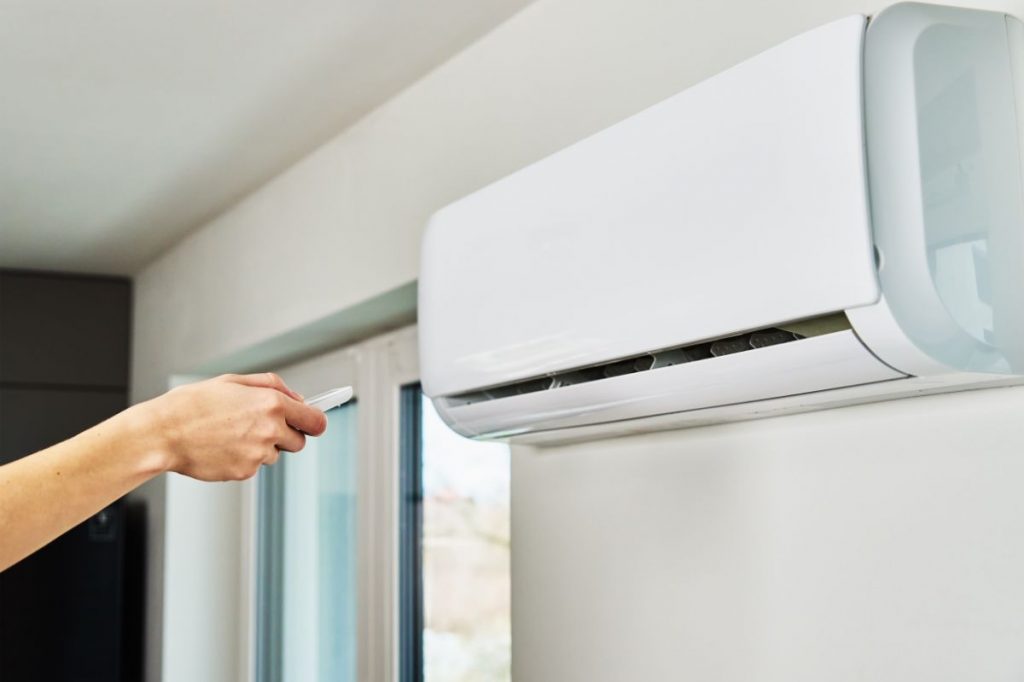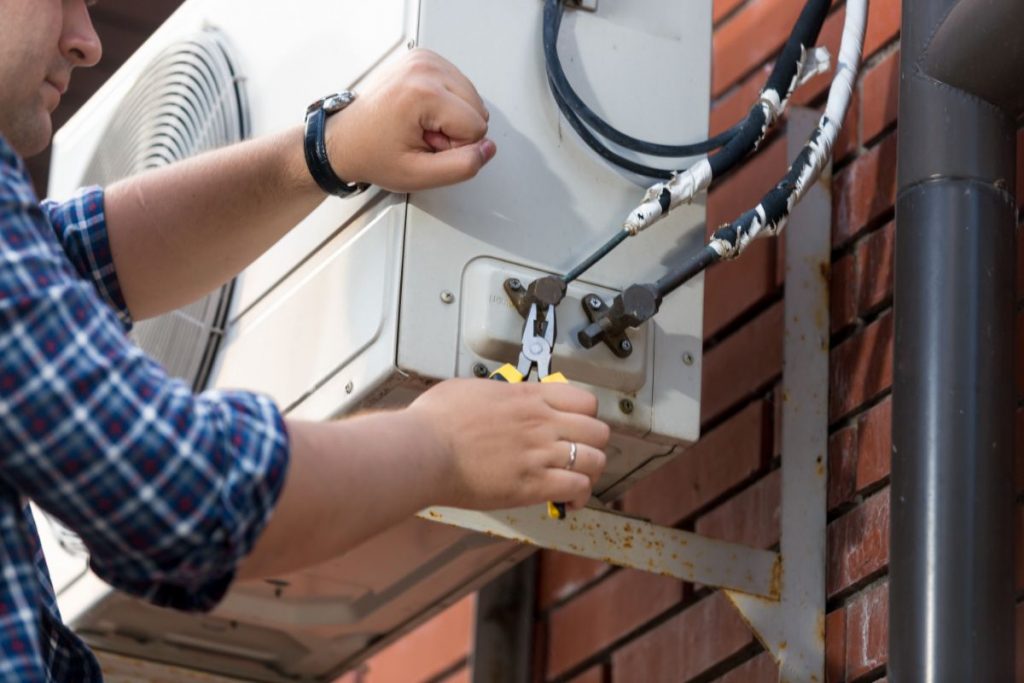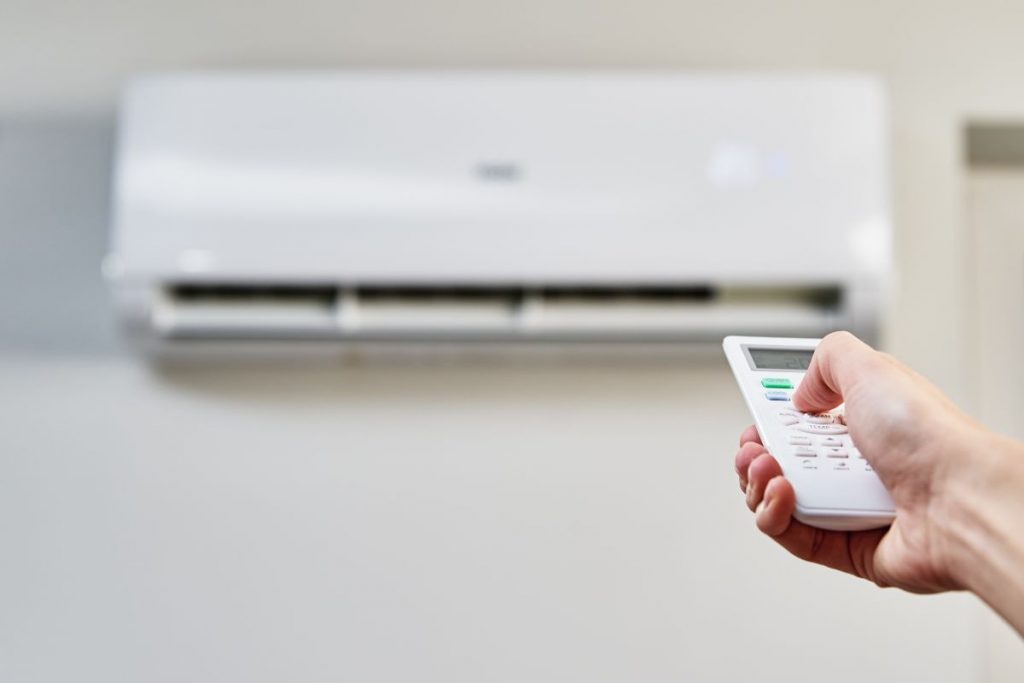
When it comes to cooling and heating your home, choosing the right system can make all the difference. Traditional central air conditioning systems are a common choice for many homeowners, but there is another option gaining in popularity – the mini split air conditioner and heat pump. In this blog, we’ll take a closer look at what mini split systems are, why you might choose one over a central AC unit, and how much money you could save with a mini split in a 2000 square foot home in Pennsylvania.
A mini split is designed to cool or heat individual rooms or zones in your home. Unlike a central AC system, which uses ductwork to force cool air throughout the house, a mini split system uses a small outdoor unit and one or more indoor units to provide cooling or heating to specific areas.
The indoor unit is typically mounted high on a wall and is connected to the outdoor unit by a small conduit that contains the refrigerant lines, power cables, and a condensation drain tube. Because the indoor unit is mounted up high, it can distribute cool air evenly throughout the room without creating drafts, and with minimal noise.

Mini split air conditioners can save money on your energy bills. The U.S. Department of Energy notes mini split systems are up to 30% more energy efficient than traditional central AC systems. This means you could save hundreds of dollars per year on your energy bills.
In addition to energy savings, mini split systems also have lower maintenance costs than central AC systems. This is because they don’t have ductwork and have fewer parts to maintain and repair. Additionally, mini split systems typically have longer lifespans than central AC, which means you won’t have to replace them as often.

If you’re considering installing a mini split air conditioner and heat pump in your home in, you may be wondering how much it will cost you to operate the system for a full year. While the cost can vary depending on a number of factors, including your energy usage habits, preferred heating or cooling temperatures, and the efficiency of your system, we’ve put together some cost data a typical Pennsylvanian could expect, to give you an idea of what your heating and cooling bills.
To figure out the cost of operating your mini split system, you’ll want to know the system’s energy efficiency rating, or SEER (Seasonal Energy Efficiency Ratio) for cooling and HSPF (Heating Seasonal Performance Factor) for heating, along with the cost of electricity. In Pennsylvania, most households pay about $0.13/kWh (kilowatt-hour) for electric. These ratings indicate how efficiently the system uses energy to heat or cool your space.
For this example, let’s assume you have a mini split system with a SEER rating of 20 and an HSPF rating of 10. We’ll also assume that you use your system for both cooling and heating, and that you set your thermostat to 72 degrees Fahrenheit during the summer and 68 degrees Fahrenheit during the winter.
To figure out your yearly cooling costs first you’ll need to know the size of your system in tons. A 2-ton mini split system is typically appropriate for a 2000 square foot home.
Assuming you use your system for cooling from May through September, which is a typical cooling season in Pennsylvania, and that you run your system for 8 hours per day, here’s how the costs break down:
To calculate your annual heating costs, you’ll need to know the size of your system in BTUs. A 2-ton mini split system with an HSPF rating of 10 can produce around 24,000 BTUs per hour.
Assuming you use your system for heating from October through April, which is a typical heating season in Pennsylvania, and that you run your system for 8 hours per day, here’s how the costs break down:
To calculate the total annual cost of operating your mini split system in Pennsylvania, you’ll need to add together the costs for cooling and heating:
It’s important to note that this is just an estimate, your actual costs may be higher or lower depending on a number of factors. For example, if you use your system for a longer time each day or if you set your thermostat to a lower temperature during the winter, your costs will be higher. However, this estimate should give you an idea of what to expect.

Long-term cost savings of installing a mini split system compared to a traditional central AC unit can be significant. Mini split systems are highly efficient, meaning they can save you money on your energy bills year after year. Additionally, mini split systems require less maintenance than central AC systems.
If you’re interested in installing a mini split system in contact Shipley Energy. We’ll keep you comfortable year-round for less! Call 1-800-839-1849